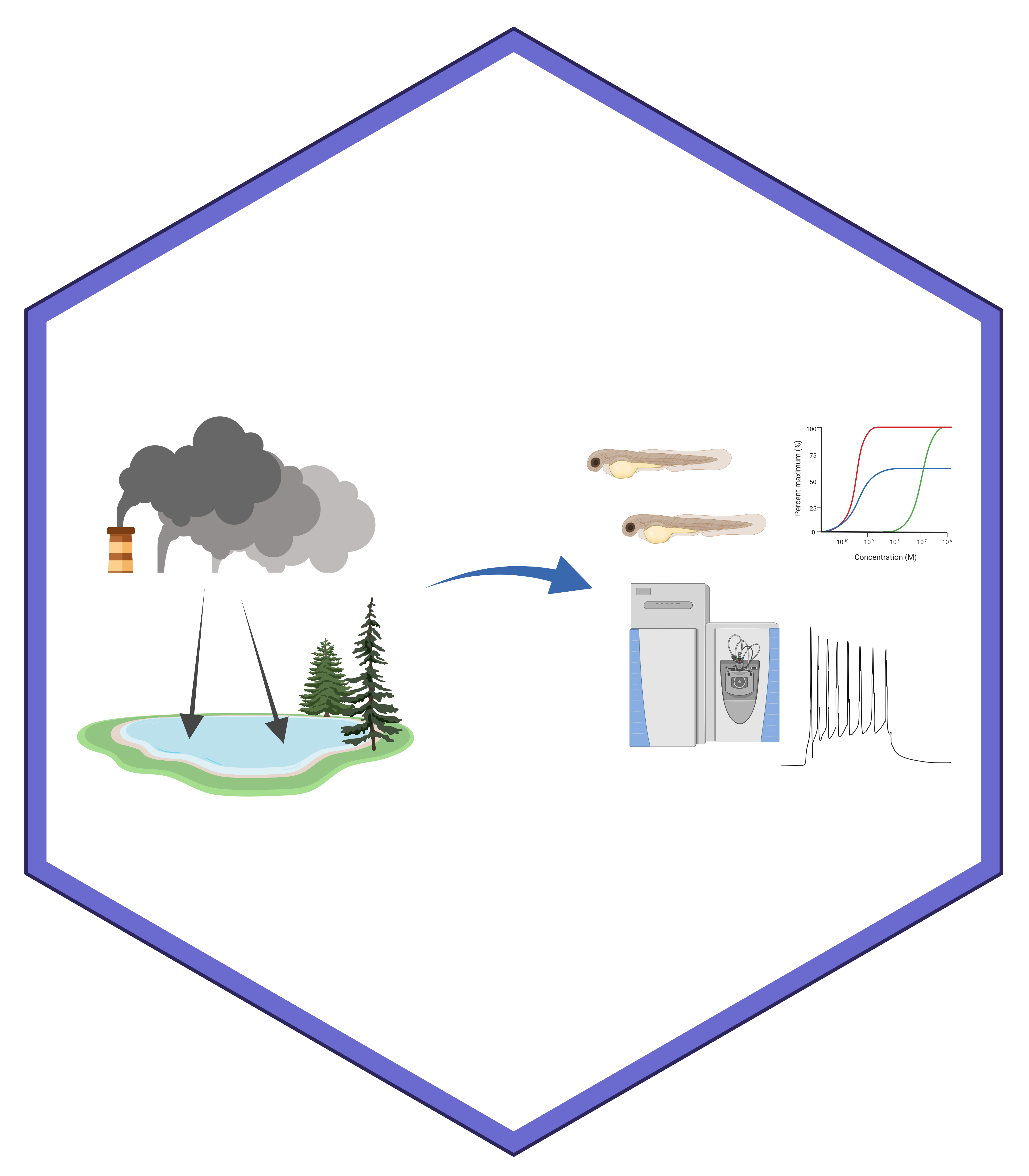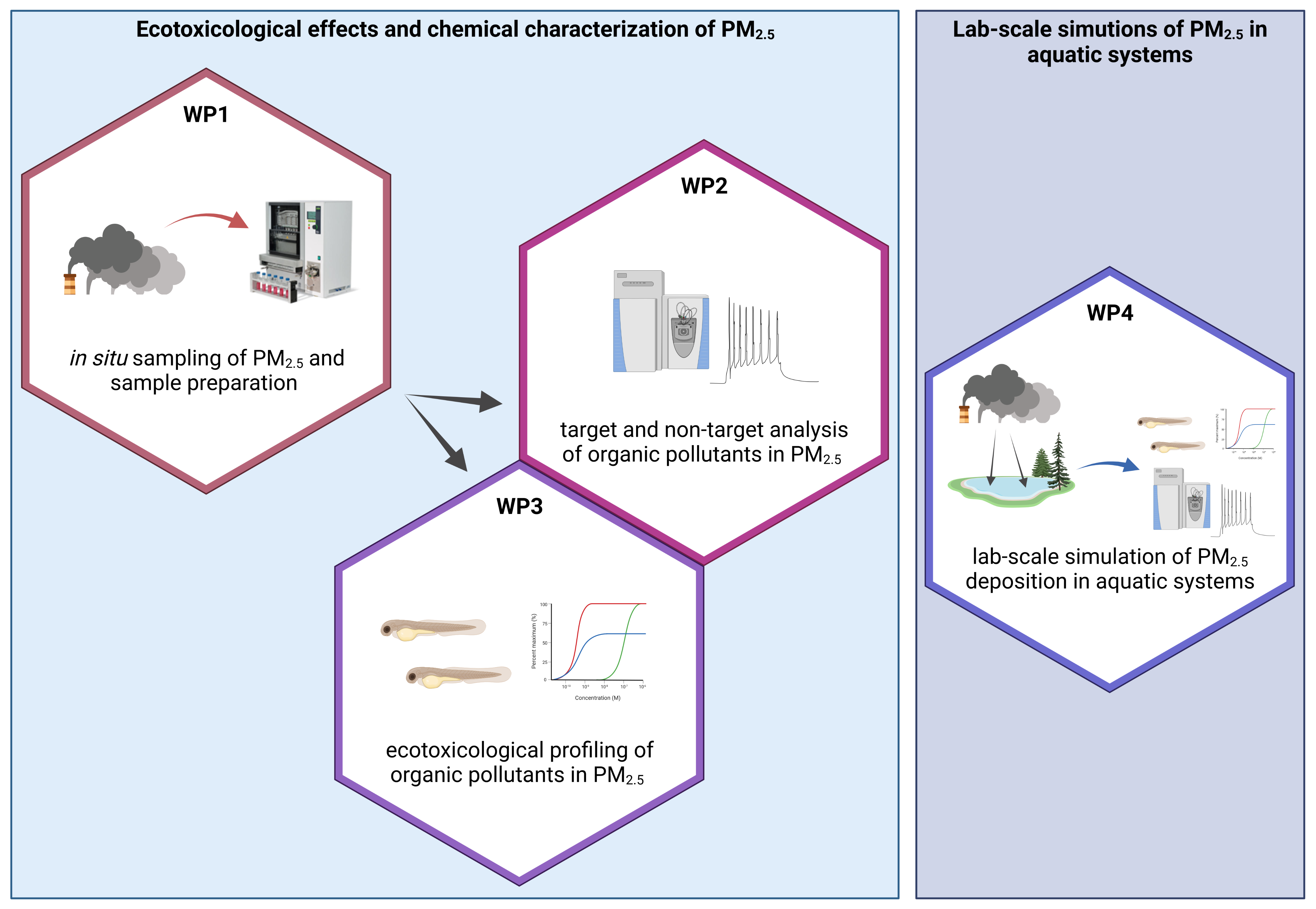Ecotoxicological investigation and chemical characterization of the organic fraction in urban particulate matter and its influence on aquatic systems

Project duration: 2021–2022
Funding: RobustNature SynergyFunds
Princinple investigators
- Prof. Dr. Alexander Vogel, Atmospheric Environmental Analytics, Goethe University Frankfurt
- Prof. Dr. Henner Hollert, Evolutionary Ecology & Environmental Toxicology (E³T), Goethe University Frankfurt
Project coordination
- Marc Wollenweber M.Sc., Evolutionary Ecology & Environmental Toxicology (E³T), Goethe University Frankfurt
Project partners
- Prof. Dr. Joachim Curtius, Experimental Atmospheric Research, Goethe University Frankfurt
- Prof. Dr. Werner Brack, Department of Effect-Directed Analysis, Helmholtz Centre for Environmental Research (UFZ) and Goethe University Frankfurt
- Prof. Dr. Jörg Oehlmann, Aquatic Ecotoxicology, Goethe University Frankfurt
- Prof. Dr. Petra Döll, Institute for Physical Geography, Goethe University Frankfurt
- Prof. Dr. Bernd Grünewald, Bee Research Institute, Goethe University Frankfurt
Project description
Air pollution is overall a major global problem and a serious thread for humans and the environment. In particular, PM2.5, one important fraction of airborne particulate matter (PM) has caught increasing attention in the scientific community. Due to its small size PM2.5 has a wide array of exposure pathways. PM2.5 consists not only of primary organic aerosols (PAOs; e.g., particles formed during incomplete combustion of organic matter) but largely of secondary organic aerosols (SAOs), organic compounds formed through oxidation of gas-phase organic compounds and condensation of pre-existing airborne particles. Although considerable resources have been spent on air pollution research and PM2.5 in particular one major factor has been neglected: It's fate in aquatic systems and impact of aquatic biota. Airborne particles can enter aquatic systems by various means and components of PM2.5 have shown to cause serious adverse effects in aquatic biota. However, despite decades of air pollution research there is a significant knowledge gap regarding fate, behavior and exposure of airborne PM2.5 in aquatic systems. Here, we propose a proof-of-concept study that seeks to elucidate the relationship between air and water pollution on the example of urban PM after entering aquatic systems.

- Aktuelles und Presse
- Pressemitteilungen
- Öffentliche Veranstaltungen
- Uni-Publikationen
- Aktuelles Jahrbuch
- UniReport
- Forschung Frankfurt
- Aktuelle Stellenangebote
- Frankfurter Kinder-Uni
- Internationales
- Outgoings
- Erasmus / LLP
- Goethe Welcome Centre (GWC)
- Refugees / Geflüchtete
- Erasmus +
- Sprachenzentrum oder Fremdsprachen
- Goethe Research Academy for Early Career Researchers
- Forschung
- Research Support
- Forschungsprojekte, Kooperationen, Infrastruktur
- Profilbereich Molecular & Translational Medicine
- Profilbereich Structure & Dynamics of Life
- Profilbereich Space, Time & Matter
- Profilbereich Sustainability & Biodiversity
- Profilbereich Orders & Transformations
- Profilbereich Universality & Diversity




